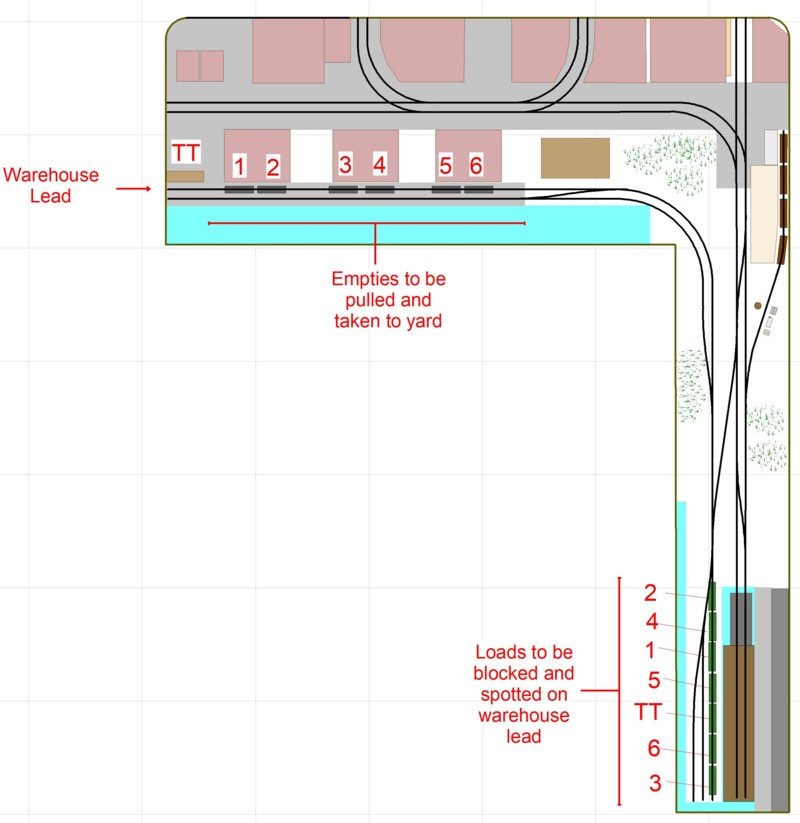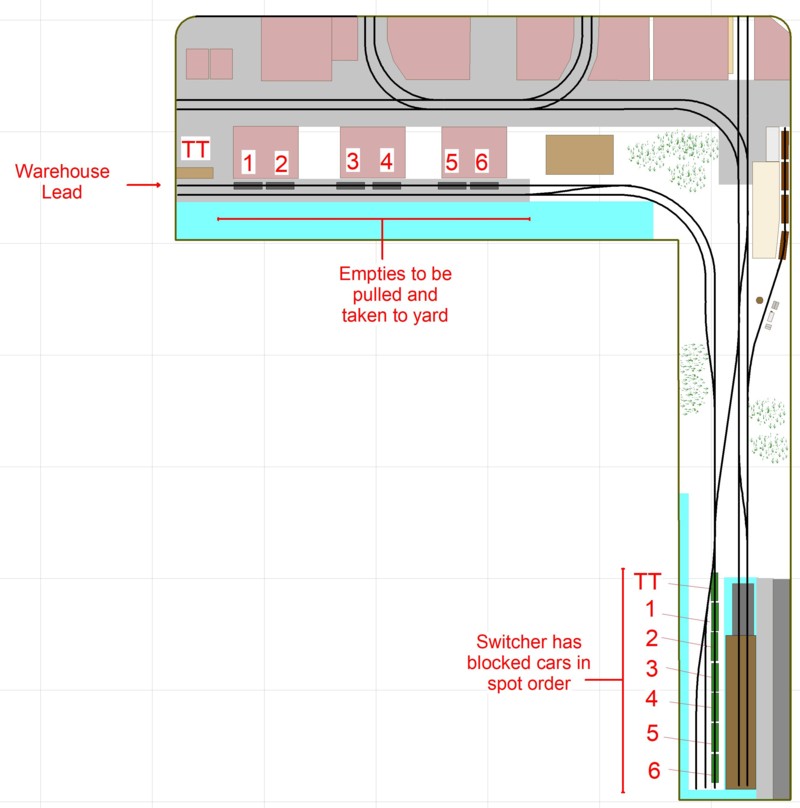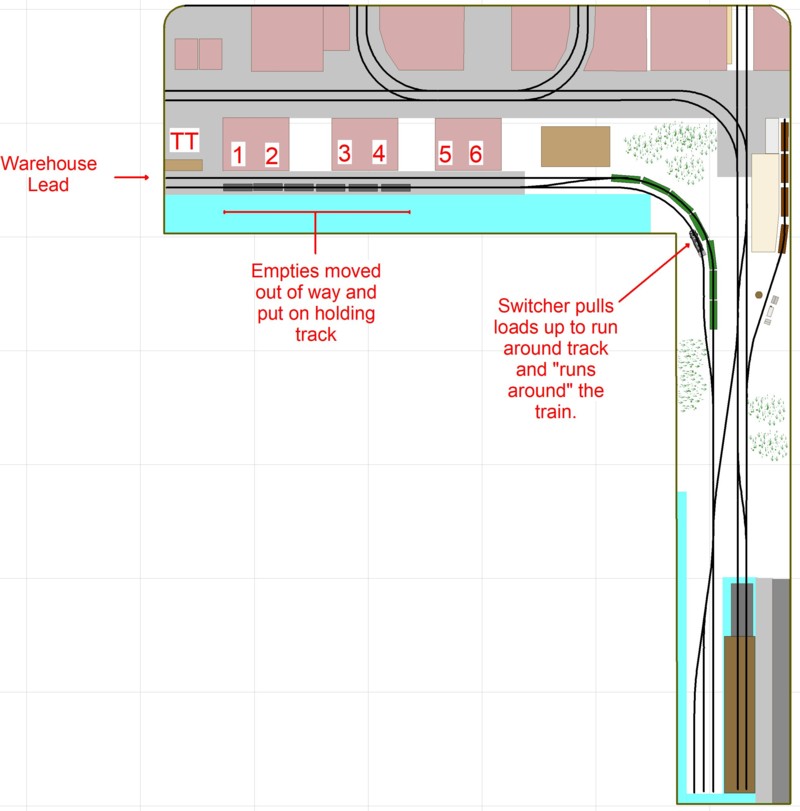Certainly, there are many reasons to feature rail served industries on a layout beyond the operational aspect. If you’re modeling a section of a specific prototype, and the industry is there, you’d probably want to include it on your layout just to be accurate. You’d do so whether you care about operations or not. If your primary interest is structure building, you may want to include a structure whether you care about operations or not. You’d do so simply for the enjoyment that building it provides. That’s all fine. However, if you are adding structures and track primarily for the operational play value, then it’s important to be conscious of how little it takes to spin out an op. session or you run the risk of building in a lot more capacity than you’ll ever use.
Case in point is the mini session shown below. I’ve written many times that I enjoy running a lot of short, thirty minute sessions on my own in the evening as opposed to longer formal sessions. With that in mind, when I plan a layout for myself, once I know I have enough track/industries to run a few half hour sessions, I stop adding capacity.
Shown below is a simple sequence involving classifying cars in the yard and spotting them at the BT warehouse complex. I intentionally made the movements relatively easy but even so it timed out to a half an hour op. session length.




So, there you have it. We only used five of the layout’s turnouts for this sequence. There were no operational obstacles built in and what we end up with was a relaxing half hour running trains.
